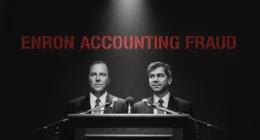The Empire Built on Lies
November 6, 2022. A Sunday evening. Sam Bankman-Fried sat in his Bahamas penthouse, watching his empire crumble in real-time.
Just five days earlier, he was worth $26 billion. Moreover, FTX was valued at $32 billion. Forbes called him the next Warren Buffett. Politicians took his donations. Celebrities promoted his exchange. The world believed he was a genius.
Now, his company was bankrupt. Additionally, $8 billion in customer money had vanished. Furthermore, he faced decades in prison. The fall was complete. And it was his own fault.
This is the story of the FTX bankruptcy. A tale of lies, greed, and the biggest fraud in cryptocurrency history. Consequently, it destroyed a million investors. Meanwhile, it exposed the dark truth about crypto exchanges.
Let’s investigate how a 30-year-old MIT graduate stole $8 billion and almost got away with it.
The Rise: Building the Perfect Illusion
The Beginning (2017-2019)
Sam Bankman-Fried, known as SBF, graduated from MIT in 2014. Initially, he worked at Jane Street Capital, a trading firm. Then in 2017, he discovered cryptocurrency arbitrage. Specifically, he noticed Bitcoin traded at different prices in different countries.
He founded Alameda Research in 2017. This was his crypto trading firm. Soon, Alameda was making millions exploiting price differences. By 2019, SBF was wealthy. But he wanted more.
The problem? Alameda needed a reliable exchange. Traditional exchanges had fees. They had delays. They had restrictions. Therefore, SBF decided to build his own exchange.
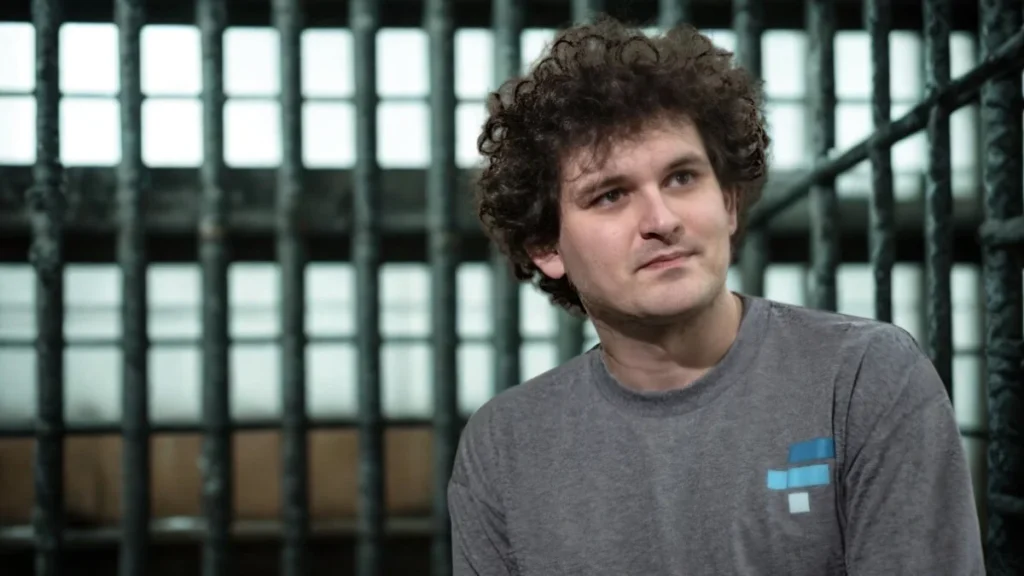
FTX Launches (2019)
In May 2019, FTX was born. FTX stood for “Futures Exchange.” The pitch was simple: A professional crypto exchange for serious traders. Better technology than competitors. Lower fees. Faster transactions.
Initially, FTX attracted institutional investors. The platform worked well. Additionally, it had innovative features. Consequently, trading volume grew quickly. By the end of 2019, FTX was processing $1 billion in daily trades.
But here’s what nobody knew: From day one, Alameda Research had special privileges on FTX. Specifically, Alameda could borrow unlimited customer funds. There was no collateral required. No risk controls. No oversight.
This was the original sin. Everything that followed came from this secret arrangement.
The Explosion (2020-2021)
Then COVID-19 hit. Governments printed money. Interest rates dropped to zero. Therefore, people rushed into risky investments. Crypto prices exploded. Bitcoin went from $7,000 to $69,000. Everyone wanted in.
FTX grew exponentially. Trading volume increased 1000%. New users flooded in. Celebrities promoted it. Sports teams wore FTX logos. The Miami Heat arena became “FTX Arena” for $135 million.
Meanwhile, SBF cultivated a unique image:
- Slept on a beanbag in his office
- Drove a beat-up Toyota Corolla
- Wore shorts and t-shirts to meetings
- Preached “effective altruism”
- Promised to give away his fortune
The media loved him. He appeared on magazine covers. Politicians sought his donations. In fact, he donated $40 million in the 2022 election cycle. He became the second-largest Democratic donor.
By November 2021, FTX hit peak valuation: $32 billion. Moreover, SBF’s personal net worth reached $26 billion. He was 29 years old.
Everything looked perfect. Everything was fake.
The Secret Crime
The Hidden Backdoor
What customers didn’t know: When you deposited money on FTX, it didn’t stay in your account. Instead, FTX transferred customer funds to Alameda Research. Then, Alameda used that money for risky bets.
This wasn’t investing. This was theft. Specifically, it violated every principle of exchange operations. Customer funds should be segregated, available for withdrawal, and never used for proprietary trading.
But SBF had programmed a secret backdoor into FTX’s code. This allowed Alameda to have a negative balance of up to $65 billion. No other customer had this privilege. No risk controls applied to Alameda.
Caroline Ellison, Alameda’s CEO and SBF’s ex-girlfriend, later testified about the scheme. She said SBF directed her to use customer funds. Moreover, he told her to lie about it. Furthermore, he created fake balance sheets to hide the theft.
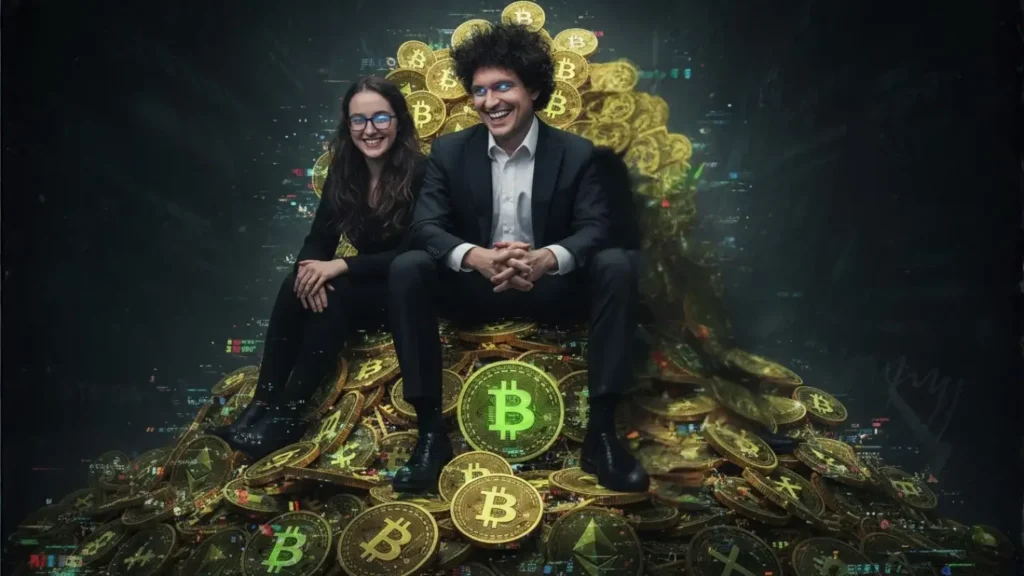
The Gambling Addiction
Where did the $8 billion go? Alameda lost it through terrible trades. For instance:
The LUNA Collapse (May 2022): Alameda held billions in LUNA tokens. When Terra/LUNA collapsed, Alameda lost over $1 billion in days. Rather than stop, they kept gambling.
Real Estate Spending:
- $300 million on Bahamas real estate
- Luxury penthouses for executives
- Private jets
- Political donations
- Sponsorships and marketing
Failed Investments: Alameda invested billions in illiquid venture deals. These couldn’t be sold quickly. Therefore, when customers wanted withdrawals, the money wasn’t there.
Personal Loans: SBF borrowed $1 billion from Alameda for personal use. Other executives borrowed hundreds of millions. This money came from FTX customers.
The Coverup
As losses mounted, SBF took desperate measures:
Fake Financial Statements: Alameda created multiple sets of books. One showed the real losses. Others showed fake profits. These fake statements went to investors and lenders.
Token Manipulation: FTX created the FTT token. Alameda held billions of FTT. FTX counted FTT at inflated values as assets. This made the balance sheet look healthy.
Celebrity Distractions: While the fraud accelerated, FTX spent millions on marketing:
- Super Bowl ad with Larry David ($30 million)
- Tom Brady and Gisele Bündchen as spokespeople
- Kevin O’Leary endorsements
- Stadium naming rights
The marketing worked. New customers kept depositing. This gave SBF more money to steal. A classic Ponzi dynamic.
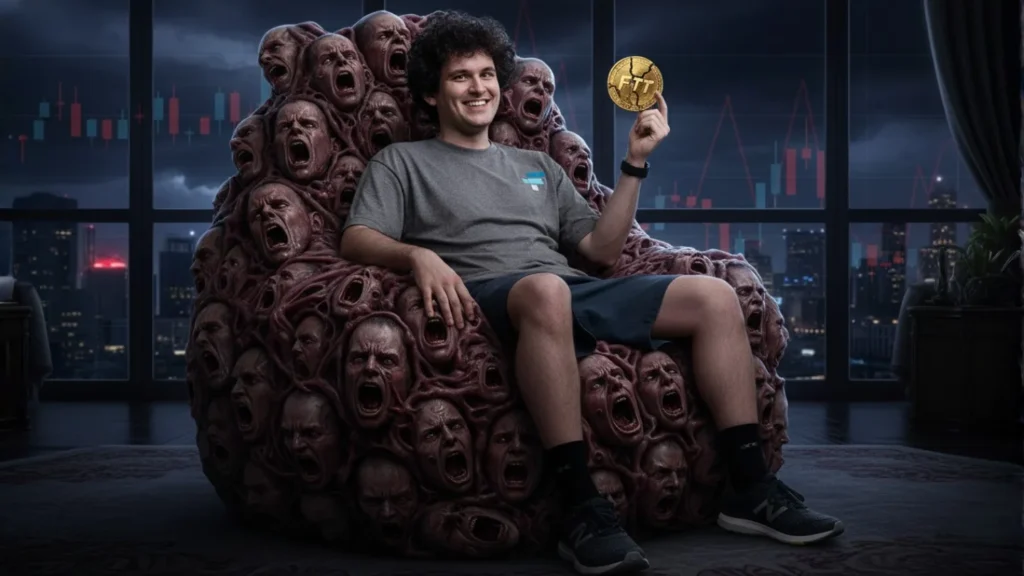
The Collapse: 72 Hours of Chaos
November 2, 2022: The Article
CoinDesk published a bombshell article. It revealed Alameda’s balance sheet. Specifically, the article showed Alameda held $14.6 billion in assets. However, $5.8 billion was FTT token—FTX’s own cryptocurrency.
This meant Alameda’s value depended on the FTT price. Moreover, it suggested the two companies were dangerously intertwined. The crypto community immediately grew suspicious.
November 6: Binance Announcement
Changpeng Zhao (CZ), Binance CEO, tweeted a bombshell. Binance would sell all its FTT holdings—about $530 million worth. He cited “recent revelations” as the reason.
This was a death sentence. If Binance dumped FTT, the price would crash. Consequently, Alameda’s balance sheet would collapse. Therefore, FTX might be insolvent.
Panic began. Customers rushed to withdraw funds.
November 7: The Bank Run
Within 24 hours, customers tried to withdraw $5 billion. FTX couldn’t process the withdrawals. The money wasn’t there. Meanwhile, SBF scrambled for solutions.
He called other exchanges begging for loans. He contacted billionaires seeking bailouts. He even asked CZ if Binance would acquire FTX. Initially, CZ agreed to explore it.
For one brief moment, it seemed FTX might survive.
November 8: Withdrawals Frozen
FTX froze all customer withdrawals. The official reason: “Unprecedented volume.” The real reason: They didn’t have the money.
On social media, SBF claimed FTX was fine. He tweeted: “Assets are fine.” This was a lie. Additionally, he tweeted: “FTX is processing all withdrawals.” Another lie.
Customers panicked. Their money was trapped. FTX was insolvent. The truth was finally emerging.
November 9: Binance Walks Away
After reviewing FTX’s books, Binance immediately backed out. CZ announced they wouldn’t acquire FTX. The reason? “Issues that are beyond our control or ability to help.”
Translation: The fraud was too big. The hole was too deep. Moreover, customer funds had been stolen. There was nothing left to acquire.
FTX was finished.
November 11: Bankruptcy Filing
At 4:30 AM, FTX filed for Chapter 11 bankruptcy. Simultaneously, SBF resigned as CEO. John J. Ray III, a restructuring expert who’d handled Enron, took over.
The bankruptcy filing revealed shocking numbers:
- Over 1 million creditors
- $8+ billion in customer funds are missing
- Assets scattered across 130+ companies
- Complete lack of financial records
Ray later testified: “Never in my career have I seen such a complete failure of corporate controls.” This from a man who’d cleaned up Enron.
The Investigation Begins
The Bahamas Arrest (December 12, 2022)
Just one month after the collapse, Bahamas police arrested SBF. Subsequently, U.S. prosecutors unsealed criminal charges:
The Charges:
- Wire fraud (multiple counts)
- Conspiracy to commit wire fraud
- Securities fraud
- Commodities fraud
- Money laundering
- Campaign finance violations
Maximum sentence: 115 years in prison.
Initially, SBF fought extradition. Then, mysteriously, he changed his mind. He waived extradition and flew to New York. Some speculated he thought he could talk his way out. He was wrong.
The Cooperating Witnesses
Meanwhile, SBF’s inner circle flipped immediately:
Caroline Ellison (Alameda CEO): Pleaded guilty to fraud charges. Moreover, she agreed to testify against SBF. She provided detailed records of the fraud. Additionally, she revealed SBF’s direct involvement.
Gary Wang (FTX Co-Founder/CTO): Pleaded guilty. He’d coded the backdoor that allowed Alameda’s unlimited borrowing. Furthermore, he testified about SBF’s instructions to create this feature.
Nishad Singh (FTX Engineering Director): Pleaded guilty. He testified about the fake balance sheets and the lavish spending of customer funds.
All three received reduced sentences in exchange for cooperation. They became the prosecution’s star witnesses.
SBF’s Disastrous Media Tour
Incredibly, before his arrest, SBF went on a media tour. He gave interviews to major outlets. Additionally, he tweeted constantly. His strategy? Claim incompetence, not fraud.
Sample quotes:
- “I didn’t knowingly commingle funds.”
- “I was bad at accounting.”
- “I made mistakes.”
- “I didn’t think about risk management enough.”
Every interview made the prosecutors’ case stronger. He was admitting to the actions while claiming ignorance of the consequences. However, the evidence showed he knew exactly what he was doing.
The Trial: October 2023
Jury Selection (October 3)
The trial began in Manhattan federal court. Judge Lewis Kaplan presided. The case was straightforward: Did SBF steal customer money? The prosecution would prove he did.
Jury selection was quick. The defense wanted crypto-friendly jurors. The prosecution wanted people who understood basic honesty. Twelve jurors were seated within days.
Prosecution Case (Week 1-2)
The government called a devastating lineup of witnesses:
Marc-Antoine Julliard (Customer): A doctor from France who lost $100,000. He testified about trusting FTX’s promises. Moreover, he showed how the exchange promoted itself as safe and regulated.
Adam Yedidia (FTX Developer/Friend): SBF’s former roommate and FTX developer. He testified that SBF knew Alameda was using customer funds. Furthermore, he quit when he discovered the fraud.
Gary Wang (Co-Founder): Testified for days about the secret code. He explained how SBF directed him to program Alameda’s special privileges. Additionally, he showed internal messages proving SBF’s knowledge.
Caroline Ellison (Star Witness): The most damaging testimony. She brought spreadsheets, chat logs, and audio recordings. Specifically:
- SBF directed her to use customer funds
- He approved fake balance sheets sent to lenders
- He knew about the $8 billion hole months before the collapse
- He told her to lie about it
She testified: “He directed me to commit these crimes.” There was no ambiguity.
Nishad Singh: Confirmed the fraud. Moreover, he testified about the spending: $40 million for political donations, hundreds of millions for personal loans, luxury real estate purchases—all from customer funds.
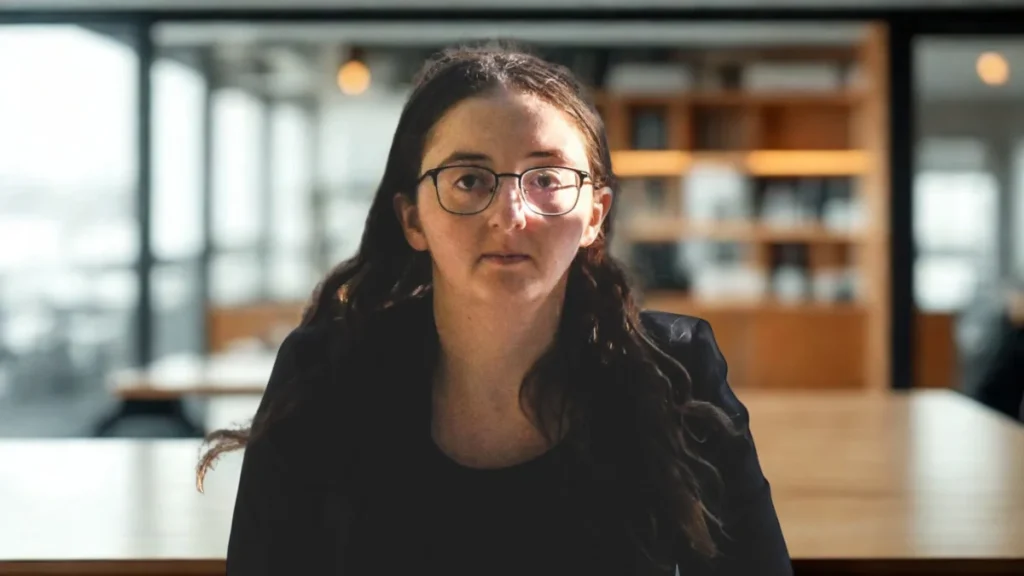
Defense Case (Week 3)
SBF’s lawyers had an impossible task. The evidence was overwhelming. Therefore, their strategy: Blame Caroline Ellison and claim SBF was too busy to notice.
Sam Bankman-Fried Takes the Stand: Against his lawyers’ advice, SBF testified. It was catastrophic.
He claimed:
- He didn’t know Alameda was using customer funds (contradicted by witnesses)
- He trusted Caroline to manage risk (she testified he gave orders)
- He made mistakes, but not crimes (evidence showed intentional fraud)
On cross-examination, prosecutor Danielle Sassoon destroyed him. She showed him his own tweets promising customer funds were safe. Then she showed evidence he knew they weren’t. He had no good answers.
The jury saw through everything. His testimony sealed his conviction.
Verdict (November 2, 2023)
After just four hours of deliberation, the jury returned:
Guilty on all seven counts:
- Wire fraud on customers
- Conspiracy to commit wire fraud on customers
- Wire fraud on lenders
- Conspiracy to commit wire fraud on lenders
- Conspiracy to commit securities fraud
- Conspiracy to commit commodities fraud
- Conspiracy to commit money laundering
SBF showed no emotion. His parents cried. The victims in the courtroom felt some relief. Finally, accountability.
The Sentencing: March 28, 2024
Victim Impact Statements
Before sentencing, victims addressed the court:
Sunil Kavuri (Lost $2.1 million): “I trusted FTX because of Sam’s reputation. That money was my family’s future. Now it’s gone. He destroyed us and showed no remorse.”
Adam Yedidia’s Father (Lost $100,000): “I’m a teacher. That money was my retirement. Sam betrayed everyone who believed in him.”
Dozens more submitted written statements. The common theme: Betrayal. Moreover, many victims would never financially recover.
SBF’s Statement
SBF addressed the court for 20 minutes. He expressed regret. However, he still claimed he’d made mistakes, not committed crimes. Additionally, he suggested customers would eventually be repaid in full.
Judge Kaplan wasn’t buying it. He noted SBF had perjured himself repeatedly during the trial. Moreover, he’d shown no genuine remorse. Furthermore, he’d obstructed justice by attempting to influence witnesses.
The Sentence
Judge Kaplan sentenced Sam Bankman-Fried to 25 years in federal prison. Additionally:
- $11 billion in forfeiture
- No parole (federal sentences must be served in full)
- Credit for time served: 6 months
- He’ll likely serve until age 57
Judge Kaplan stated: “There is a risk this man will be in a position to do something very bad in the future, and it’s not a trivial risk.”
The sentence was less than the 40-50 years prosecutors requested. However, it was more than the 6 years the defense sought. At 32 years old, SBF would spend his prime years in prison.
The Aftermath
Customer Recovery
Bankruptcy proceedings continue. FTX’s new management has recovered some assets. However, customers face a painful reality:
Recovery Rate (as of 2024):
- Estimated: 40-60 cents on the dollar
- Timeline: Years of legal proceedings
- Tax complications: Many owe taxes on 2021 gains but lost everything in 2022
Thousands of customers lost life savings. Some lost retirement funds. Others lost money borrowed against their homes. The human cost is incalculable.
The Cooperating Witnesses Sentenced
Caroline Ellison: Sentenced to 2 years in prison (September 2024). Her cooperation was substantial. However, Judge Kaplan said some prison time was necessary given the scale of fraud.
Gary Wang: Sentenced to time served plus supervised release. No prison time. His cooperation was extensive, and he had a minimal role in the fraud.
Nishad Singh: Sentenced to time served. Similar to Wang, cooperated fully and had limited involvement.

FTX Arena Renamed
The Miami Heat terminated the $135 million naming rights deal. The arena is no longer “FTX Arena.” The sign came down in January 2023. Now it’s called “Kaseya Center.”
Every sports partnership ended. Tom Brady and Gisele Bündchen faced lawsuits for promoting FTX. Kevin O’Leary lost credibility. The celebrity endorsers had enabled a massive fraud.
Industry Impact
The FTX bankruptcy sent shockwaves through crypto:
Immediate Effects:
- Multiple exchanges collapsed within months
- Bitcoin dropped 65% from its peak
- $2 trillion in crypto market cap evaporated
- Institutional investors fled the space
Regulatory Response:
- SEC intensified crypto enforcement
- Congress held hearings
- New legislation proposed
- Exchanges face stricter scrutiny
The FTX collapse proved what skeptics always said: Unregulated exchanges were dangerous. Customer protection was nonexistent. The industry needed adult supervision.
Political Fallout
SBF’s political donations became toxic. Politicians scrambled to return or donate the money. Some couldn’t—they’d already spent it.
Questions emerged: Did donations influence policy? Were politicians willfully blind? How did a 30-year-old gain such political access?
The campaign finance charges against SBF highlighted money’s corrupting influence in politics. His donations had bought meetings, influence, and credibility. All built on stolen money.
Lessons from the FTX Bankruptcy
Red Flags Everyone Missed
Looking back, warning signs were everywhere:
No Independent Audits: FTX claimed to have audited its financials. They didn’t. The auditor was a tiny firm in the Metaverse. Literally—they operated in a virtual world.
Alameda and FTX Too Close: They shared office space. They shared executives. Caroline ran Alameda and dated SBF. This should have screamed conflict of interest.
Bahamas Headquarters: Why operate from the Bahamas? Lower regulation. Less oversight. Geographic distance from U.S. law enforcement.
Celebrity Over Substance: FTX spent hundreds of millions on marketing but couldn’t produce basic financial statements. Image over reality.
Too Good to Be True: FTX offered high interest rates on deposits. Where did returns come from? Nobody asked. Classic Ponzi red flag.
Cult of Personality: The entire company revolved around SBF’s genius. No corporate governance. No checks and balances. Dictator-style leadership.
How to Protect Yourself
The FTX bankruptcy teaches crucial lessons:
1. Not Your Keys, Not Your Coins: Keeping crypto on exchanges means trusting them with your money. They can steal it. Store significant holdings in personal wallets.
2. Verify Everything: Don’t trust marketing. Don’t trust celebrities. Instead, verify:
- Independent audits
- Proof of reserves
- Corporate structure
- Regulatory status
3. Diversify Platforms: Never keep all funds in one place. Spread risk across multiple exchanges and personal storage.
4. Watch for Conflict of Interest: If an exchange also runs a trading firm, run away. Conflicts of interest enable fraud.
5. Regulation Matters: U.S.-regulated exchanges have accountability. Offshore exchanges don’t. The extra regulation is protection, not a burden.
6. Celebrity Endorsements Mean Nothing: Tom Brady didn’t verify FTX’s legitimacy. Neither did anyone else promote it. They got paid. You took the risk.
Where They Are Now
Sam Bankman-Fried: Federal prison, Maryland. Serving 25 years. Appeals pending but unlikely to succeed.
Caroline Ellison: Began 2-year sentence in October 2024. Cooperated extensively. Will likely serve full term.
Gary Wang: Released on supervised release. Banned from the crypto industry. Keeping a low profile.
Nishad Singh: Released on supervised release. Similarly, banned from crypto. Disappeared from the public eye.
FTX Customers: Still waiting for recovery payments. Bankruptcy proceedings continue. Many will never fully recover.
Crypto Industry: Wounded but surviving. Bitcoin recovered to new highs by 2024. However, trust in exchanges remains damaged.

The Final Horror
Here’s the darkest truth about FTX bankruptcy: It was preventable. Every safeguard existed. Regulations were available. Best practices were known.
SBF chose to steal. Moreover, he chose to lie. Furthermore, he chose to put millions at risk. He wasn’t a genius who made mistakes. Instead, he was a criminal who got caught.
The victims weren’t naive. They trusted an exchange that:
- Raised billions from top investors
- Hired celebrity spokespeople
- Spent millions on compliance theater
- Lobbied Congress for legitimacy
Every signal said FTX was safe. Every signal was manufactured.
And here’s what makes it truly horrifying: Right now, other exchanges might be doing the same thing. Other founders might be stealing customer funds. Other frauds might be growing.
The crypto industry learned nothing. Trading volume on unregulated exchanges remains high. Customers still trust celebrity endorsements. The next FTX is probably already operating.
Because the real lesson of FTX bankruptcy isn’t that one man committed fraud. Instead, it’s that the system enabled him. Moreover, it rewarded him. Furthermore, it protected him until the very end.
Sam Bankman-Fried stole $8 billion. But thousands of people helped him. Investors who didn’t ask questions. Celebrities who promoted without verifying. Politicians who took his money. Customers who wanted easy returns.
Everyone played a role. Everyone ignored red flags. Everyone wanted to believe the lie.
And when you want to believe badly enough, you’ll believe anything.
Even a 30-year-old in shorts telling you he’s going to change the world.
While he’s stealing your money.
Resources
[3] U.S. Department of Justice. “FTX Founder Samuel Bankman-Fried Sentenced to 25 Years in Prison.”
[5] “United States v. Samuel Bankman-Fried.” Trial Transcript
[8]BBC: Caroline Ellison sentenced to two years for role in FTX crypto fraud
Related reading(suggested)
Nikola Motors Fraud: The $34 Billion Fake Hydrogen Truck Company







